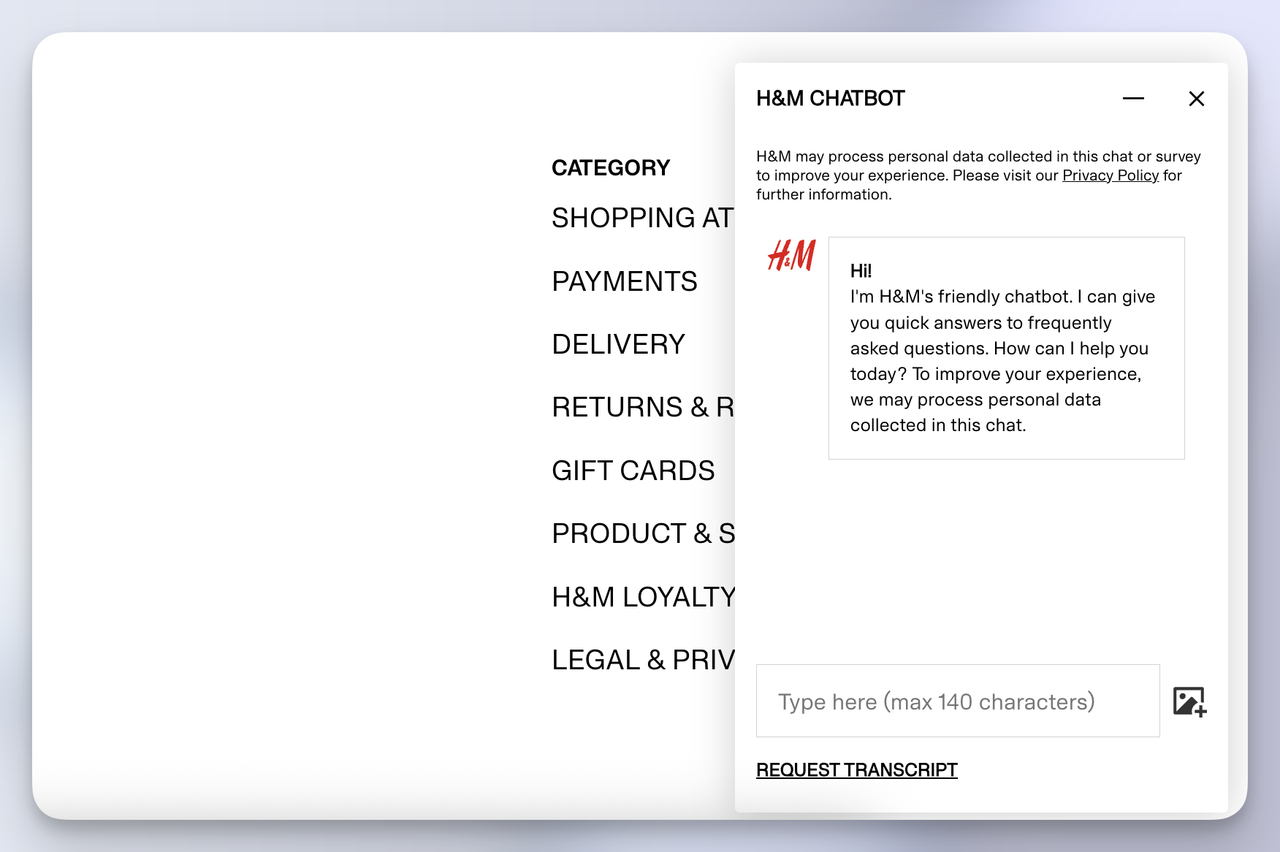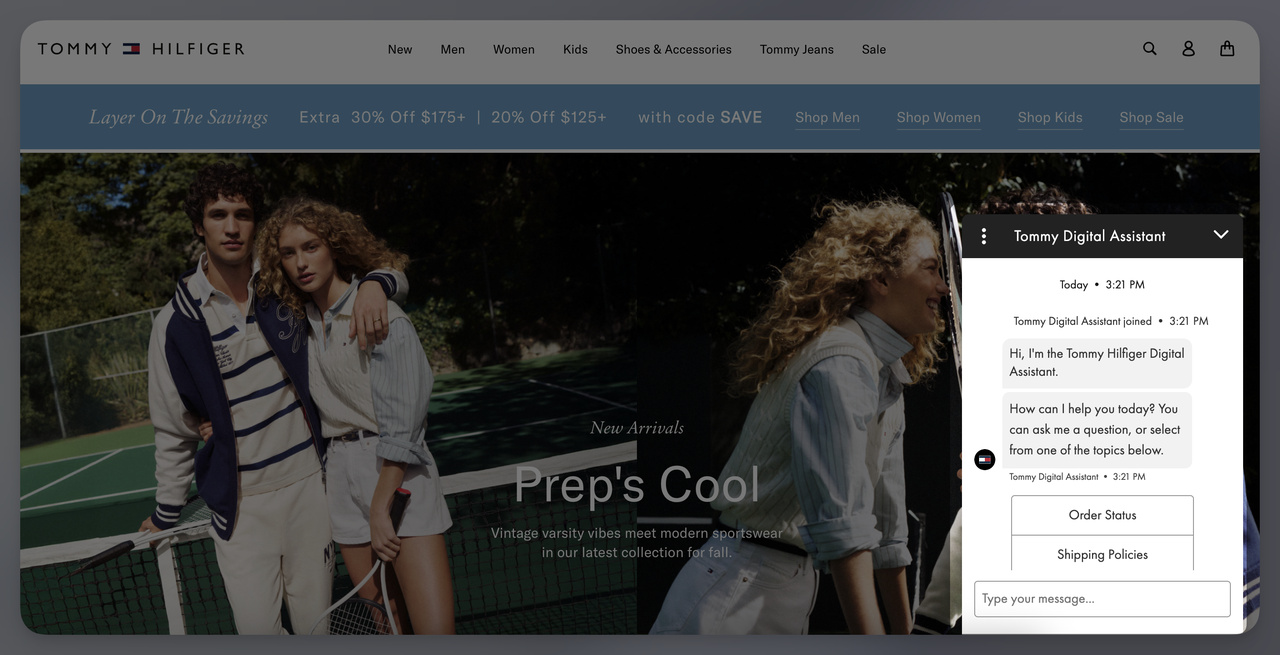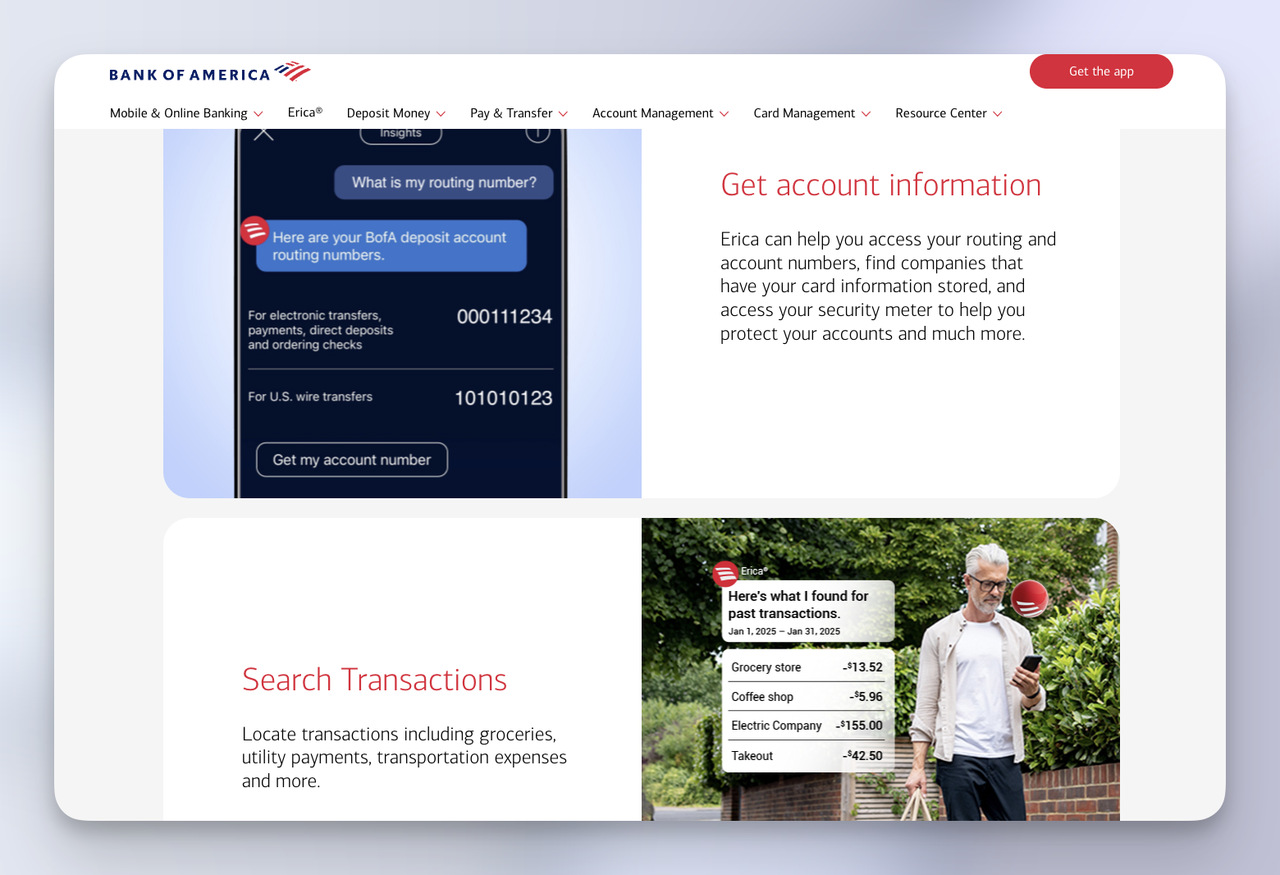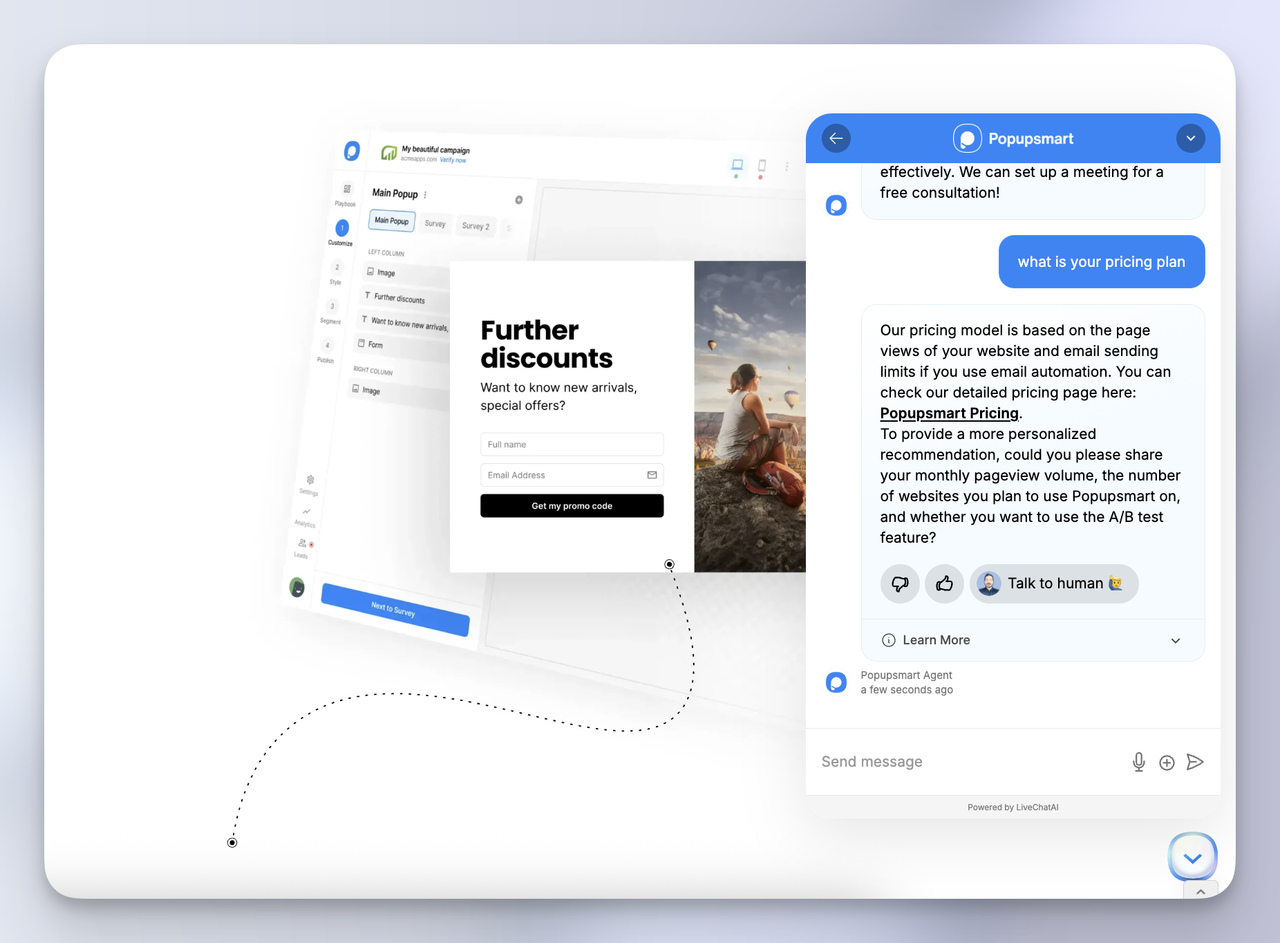Chatbots were once seen as nothing more than FAQ responders. However, these AI-powered assistants have now evolved into systems with advanced capabilities such as scheduling appointments, resolving complex issues, and even autonomously completing transactions.
In this article, I'll cover some of the most effective real-world chatbot examples across industries. Based on my years of experience as a content marketing specialist working closely with AI platforms, I can confidently say that these bots are not a future fad; they provide a competitive advantage right now.
An Overview of Chatbots in Different Industries (2025)
Chatbots are no longer niche tools; they’re mainstream business assets. By 2025, they’re projected to save companies $11 billion in support costs and 2.5 billion hours of work (ExplodingTopics).
Here’s how various industries are using them:
Healthcare
Around 19% of U.S. medical groups use chatbots for patient support. Although smaller in size, the healthcare chatbot market is experiencing rapid growth, projected to reach $1.3B by 2033 (IMARCGroup).
Banking & Finance
This sector leads in chatbot revenue, with 25–30% market share (GrandViewResearch). Banks now use bots for fraud alerts and real-time transaction verification. The BFSI chatbot market is expected to top $6B by 2030 (AWS).
Retail & E-commerce
Retail accounts for 32% of chatbot usage (Market.us), powering product recommendations, FAQs, and cart assistance.
Education
About 14% of schools and training orgs use chatbots for student support and admin tasks (Scoop Market).
Manufacturing
Once at just 12% adoption, more manufacturers now use chatbots for internal support and automation (DemandSage).
B2B & Lead Gen
55% of B2B companies use chatbots to collect leads, offer demos, and share gated content (DemandSage).
Across All Sectors
By late 2025, 95% of customer interactions are expected to involve AI in some form, fully automated or AI-assisted (MasterOfCode).
Why Real-World Chatbot Examples Matter
By 2025, the global chatbot market is projected to reach $15.6 billion, with 69% of organizations already integrating virtual assistants into their operations (G2, Rev).
Here are the reasons why it is valuable for you to see these examples:
- They show proven use cases: You’ll see exactly how businesses are solving pain points, from streamlining customer support to driving ecommerce sales.
- You discover which features actually move the needle: Natural language processing? Product search? CRM integration? These real bots highlight what matters most.
- You get implementation inspiration: Whether you're a startup or enterprise, you'll spot chatbot strategies worth adapting to your business model.
From my experience, clients often get stuck in the idea phase. But when I show them how a competitor’s chatbot increased lead capture by 38% or reduced support tickets by half, suddenly the strategy becomes clear.
Before we dive in, it’s worth noting that chatbot use cases fall into a few common categories:
- Customer support
- Sales enablement
- Lead qualification
- Internal operations
- Product recommendations
- Transactional automation
With that in mind, let’s explore how various industries are applying chatbot technology to solve real problems.
Real-World Chatbot Examples by Industry
🛍️ 1. E-commerce & Retail Chatbot Examples
E-commerce is one of the most chatbot-forward industries. Shoppers expect real-time answers, instant help, and hyper-personalized guidance, without friction.
Here are standout examples:
- Example #1: LiveChatAI Shopify Chatbot

This chatbot is built specifically for Shopify stores and does more than answer questions. It can:
→ Let users search products by name, variant, or size
→ Add items directly to the cart
→ Show real-time inventory
→ Summarize cart contents and offer upsells
⭐ A Shopify client I worked with saw a 28% lift in cart completions within the first month of integrating LiveChatAI.
- Example #2: Sephora – Virtual Artist
A Messenger-based chatbot that allows users to try on makeup virtually. It also provides beauty tips and personalized product recommendations.
📊Stats: This feature has been used by over 8.5 million visitors on Sephora Virtual Artist. (ResearchGate)
- Example #3: H&M – Style Recommendation Bot

Available on Kik, H&M’s bot chats with users, asks about their style preferences, and then curates outfit suggestions accordingly. This is a great example of turning conversation into conversion.
- Example #4: Tommy Hilfiger – Digital Shopping Assistant

Tommy Hilfiger uses a branded chatbot, the Tommy Digital Assistant, to streamline customer support directly on its website.
This bot helps shoppers with: Order status updates, shipping and return policies, common customer questions via pre-set topic suggestions.
🧠 The assistant is designed for fast, intuitive service, offering a frictionless way to get answers without waiting for a human rep. It's a strong example of how a luxury fashion brand leverages AI to maintain a sleek, helpful user experience while reducing support volume.
✈️ 2. Travel & Hospitality Chatbot Examples
When time, accuracy, and convenience are critical, chatbots shine. In travel and hospitality, bots help travelers stay informed, check in, and get help on the fly. For a deeper dive, read how to use AI chatbots in the tourism industry.
Some of the most effective implementations:
- Example #5: KLM Royal Dutch Airlines – BB (BlueBot)
This AI-powered assistant sends boarding passes, flight updates, and booking confirmations via Messenger.
Pieter Groeneveld, Senior Vice President Digital Air France - KLM, says:
“KLM is well known for its personal approach. On social media, we offer 24/7 service with our team of 250 human agents, handling more than 16,000 cases a week. Volumes will continue to grow. At the same time, customers require a speedy response. We have therefore been experimenting with Artificial Intelligence to support our agents to provide a personal, timely and correct answer. With BB, KLM is taking the next step in its social media strategy, offering personal service through technology, supported by human agents when needed.”
- Example #6: Hicamp - Hipcamp's Support llama bot

Fern is Hipcamp’s friendly, llama-themed AI support agent trained on Hipcamp’s FAQs. It helps campers and hosts get answers to product and trip-related questions, and can also escalate issues by filing support tickets for a human follow-up.
With clear, friendly messaging and personality, Fern sets a great example of how tone and branding can make a chatbot persona feel warm and approachable, even in support workflows.
⭐ Key Takeaway: Chatbots like Fern show that even niche platforms can offer delightful, efficient support that reflects their brand personality.
- Example #6: Expedia – Customer Support Bot
Assists users with trip changes, cancellations, and FAQ support through Messenger and the mobile app.
⭐ Key Takeaway:
In hospitality, speed and clarity are king. Bots that instantly surface itineraries, support content, or concierge services boost satisfaction and reduce overhead.
💳 3. Banking & Finance Chatbot Examples
Banking and finance are industries where trust, speed, and accuracy make or break customer relationships. Chatbots here are expected to handle sensitive data, offer smart recommendations, and comply with strict regulations, without sounding robotic.
Here are some standout implementations:
- Example #7: Bank of America – Erica

Erica is a powerful AI assistant that helps users check balances, track spending, and even get personalized financial tips.
💡 From a marketing perspective, what’s remarkable is Erica’s human-like tone, it builds trust, not just transactions. Here are six quick tweaks to make yours sound more human.
⭐ Key Takeaway: Chatbots in banking are becoming proactive financial companions, not just support reps. They add massive value by combining real-time data access with conversational UX.
🏥 4. Healthcare Chatbot Examples
The healthcare sector is seeing a chatbot revolution. With rising demand and limited resources, AI bots are helping triage patient issues, reduce wait times, and provide education.
Let’s look at real use cases:
- Example #8: Babylon Health – Symptom Checker Bot
Babylon’s AI bot uses a conversational interface to assess symptoms and recommend next steps. It has been used by millions globally and is trusted by national health systems like the UK’s NHS.
- Example #9: Ada Health
Another advanced symptom checker, Ada guides users through a series of questions to determine probable causes. It's used by health insurers, clinics, and even governments.
💡 Ada’s success lies in its user-centric interface, it feels like talking to a doctor who actually listens.
- Example #10: Florence – Medication Reminder Chatbot
Florence is a simple yet effective chatbot that reminds users to take medication, track health goals, and find nearby pharmacies.
⚠️ Warning: Health bots must follow HIPAA or GDPR guidelines to remain compliant. Always check data storage policies before deploying your own.
📈 Case Study: According to LLCBuddy, over 21% of Americans have used chatbots for health advice, proof that patient trust is growing (LLCBuddy, 2025).
⭐ Health chatbots bring accessibility and early intervention into patient care, vital in 2025’s overburdened systems.
🎓 5. Education Chatbot Examples
Education chatbots have shifted from gimmicks to indispensable tools. They support students 24/7, personalize learning, and reduce admin overhead for institutions.
Here’s what’s working in the field:
- Example #11 Drivings.com – LiveChatAI Bot for Driver Education
Drivings.com is a London-based platform connecting learners with qualified driving instructors. As demand grew, their support team was overwhelmed by repetitive questions on pricing, availability, rescheduling, and platform use.
By integrating LiveChatAI, Drivings.com resolves 65% of support queries.
- Example #12: Duolingo Bots
These fun, gamified bots simulate real conversations in your target language. They make language learning less intimidating and more engaging.
📌 Pro Tip: Use bots for micro-learning moments, it’s where they shine.
- Example #13: Georgia State University – Pounce
Pounce is a chatbot that helps new students with admissions, deadlines, and financial aid questions. It reportedly helped reduce summer melt by 22%.
📊Stat: According to EDUCAUSE, 70% of schools using chatbots report improved student engagement and faster response times.
- Example #14: General EdTech Bots
Homework help bots, grading assistants, and tutoring companions are becoming mainstream across tools like Quizlet, Khan Academy, and Canvas.
⭐ Key Takeaway: Educational chatbots are empowering students and easing educator workloads, especially for repetitive or high-volume queries.
🏢 6. B2B & SaaS Chatbot Examples
In the B2B and SaaS space, speed, lead qualification, and intelligent handoff are everything. Chatbots here go beyond Q&A; they route, book, qualify, and sell.
Let’s look at leaders in this category:
- Example #15: Popupsmart – LiveChatAI Bot

This B2B chatbot combines Q&A capabilities with powerful AI Actions that let it:
→ Book demos via Calendly
→ Trigger email sequences via CRM
→ Update product lists or connect to Stripe
⭐ Key Takeaway:
SaaS bots are becoming mini digital sales reps, capable of moving users from awareness to action in a single conversation.
📦 7. Logistics & Delivery Chatbot Examples
In logistics, chatbots eliminate the friction of waiting on support lines for shipment updates or delivery issues. Speed and accuracy are non-negotiable in this industry, and bots are meeting the challenge.
Here are three notable examples:
- Example #16: Domino’s – Dom Ordering Bot
Available on Facebook Messenger and voice assistants like Alexa, Dom lets customers order pizza, track delivery, and even reorder favorites.
📊 Stat Alert: Domino’s reported that bot-assisted orders accounted for 20% of all digital orders in certain markets.
- Example #17: DHL – Shipment Tracking Bot
This multilingual chatbot handles tracking updates, estimated delivery windows, and FAQs.
💡 DHL uses WhatsApp for this bot, making it highly accessible globally.
- Example #18: FedEx – Help Bot
Available on their website and mobile app, FedEx’s bot handles complex queries like customs issues and redelivery scheduling.
⚠️ Warning: Logistics bots must sync with real-time data sources, otherwise, they risk damaging trust.
⭐ Key Takeaway:
For logistics, chatbots act as instant, scalable customer service agents that remove unnecessary touchpoints and reduce support load.
🏛️ 8. Government & Public Services Chatbot Examples
Government agencies around the world are turning to chatbots to improve accessibility, reduce manual workloads, and deliver faster citizen support.
Let’s explore key implementations:
- Example #19: USCIS – Emma
Emma is a virtual assistant by U.S. Citizenship and Immigration Services. It answers questions about green cards, forms, case statuses, and wait times.
- Example #20: Estonia – Bürokratt
Estonia’s nation-scale AI chatbot connects multiple government services under one virtual assistant. Citizens can book appointments, access tax documents, and apply for permits—all through one conversation.
💡 This is the most advanced public sector chatbot implementation in the world as of 2025.
- Example #21: Singapore Gov – Ask Jamie
Ask Jamie is deployed across numerous Singaporean government agency sites and answers inquiries from licensing to housing to education.
📌 Pro Tip: Consistency and centralized knowledge are key for cross-agency chatbot success.
⭐ Key Takeaway:
Public sector chatbots are making government services more human, scalable, and efficient, a much-needed transformation in 2025.
Emerging Chatbot Use Cases in 2025
The chatbot landscape is evolving fast. Here are a few innovative use cases gaining traction this year:
- AI Agents That Trigger Actions: Unlike static Q&A bots, modern chatbots can now trigger tasks like scheduling meetings, processing payments, or updating CRM data.
✅ Example: LiveChatAI’s AI Actions let bots book demos, update product catalogs, and more, all in real time.
- Multimodal Chatbots: These bots combine text, voice, image, and even video for a richer user experience.
📊 Stats: The rise of voice commerce has made voice-enabled bots a must-have for retail and smart home devices.
- Chatbots on TikTok, WhatsApp, and Smart Devices: Brands are embedding bots where their audiences already are, on social platforms and IoT.
💡 WhatsApp bots, in particular, are booming in markets like India, Brazil, and Indonesia.
- AR/VR + Chatbot Fusion: In industries like real estate and retail, bots are being layered into virtual experiences.
🔮 Imagine walking through a virtual showroom with a bot as your guide.
The future isn’t just conversational, it’s actionable, immersive, and context-aware.
How to Choose the Right Chatbot Approach
Choosing the right chatbot approach depends on your goals, industry, and tech capabilities.
Here’s a practical breakdown:
1. Rule-Based vs. AI-Powered
- Rule-Based → Best for simple FAQs and predictable workflows.
- AI-Powered → Ideal for complex, dynamic conversations that require flexibility.
Also check out: Rule-Based Chatbots vs. AI Chatbots: Differences & Comparison.
2. Match to Your Industry
- E-commerce → Product search, upsells, cart recovery
- SaaS → Lead qualification, demo booking
- Healthcare → Symptom triage, reminders
- Finance → Transaction summaries, fraud alerts
3. Align with the Customer Journey
- Top of Funnel → Engage visitors & capture leads
- Mid-Funnel → Educate & guide prospects
- Bottom of Funnel → Convert & support customers
4. Key Features to Consider
- Natural Language Processing (NLP)
- CRM or eCommerce integrations
- Analytics & reporting dashboards
- Action triggers (booking, payment, updates)
💡 Expert Insight:
From my experience as a content marketing specialist, the smartest move is to map your customer journey first. Even the most advanced chatbot won’t deliver results if it’s in the wrong place at the wrong time.
Let’s Build Your Chatbot Right Now!
Feeling inspired by the examples above? Follow these five quick steps and you’ll have a helpful, on-brand AI agent live in minutes.
01. Import Your Data Sources with AI Boost™
Upload or link what your customers already read, help docs, webpages, PDFs, Notion/Confluence, FAQs.
AI Boost™ cleans things up for you (fixes pronouns, adds context, connects related answers) so the bot “gets” your content from day one.
02. Configure Your AI Agent
Pick your model (GPT-4o recommended) and set the basics: tone of voice, response length, confidence level, and when to hand off to a human.
You can add guidelines like “always ask a clarifying question if order number is missing” so it feels like your best support rep.
03. Enable One-Click AI Actions — Beyond Just Chat
Plug in the tools you use so the bot can take action, not just answer.
Connect Calendly to book meetings, Stripe to take payments, your CRM to capture leads, Shopify to add items to cart, or create custom API actions for anything else.
Result: customers get things done in-chat, no forms, no friction.
04. Publish Anywhere, Instantly
Copy one line of code and paste it on your site. You’re live in under 30 seconds.
Choose how it shows up: floating widget (site-wide), inline embed (specific pages), full-page chat, or a direct shareable link for email/social.
05. Monitor, Improve, Scale
Watch conversations, spot gaps, and click “improve” on any answer to retrain in seconds.
Track key metrics (resolution rate, first response time, deflection, CSAT) and keep adding content or actions. As you iterate, you’ll see more issues resolved automatically and fewer repetitive tickets, turning support into a real advantage.
Conclusion
Chatbots have moved far beyond novelty. Across industries, from ecommerce to government, real-world bots are cutting costs, improving service, and driving revenue.
If you're still on the fence about building your own, let these examples be your sign. The technology is ready, the market is primed, and the results speak for themselves.
💬 What chatbot example inspired you the most? Let me know in the comments, or better yet, test one on your site and share your results.
Frequently Asked Questions
1. What are some real-world chatbot examples?
Examples include Erica by Bank of America, KLM’s BB, Popupsmart’s LiveChatAI bot, and Domino’s ordering bot, all actively used by millions today.
2. Which companies use AI chatbots?
Thousands, including Sephora, DHL, Mastercard, HSBC, Hilton, FedEx, and Singapore Gov, use chatbots to enhance user experience and automate support.
3. What industries benefit most from chatbots?
Top sectors include eCommerce, SaaS, Healthcare, Finance, Education, Travel, and Government.
4. Can small businesses use chatbots?
Absolutely. No-code platforms like LiveChatAI and Chatbase allow small businesses to launch effective bots in minutes, without developers.
5. Are chatbot examples effective for customer support?
Yes. Chatbots reduce ticket volume, offer 24/7 availability, and can answer common questions instantly, making them a huge asset for support teams.




